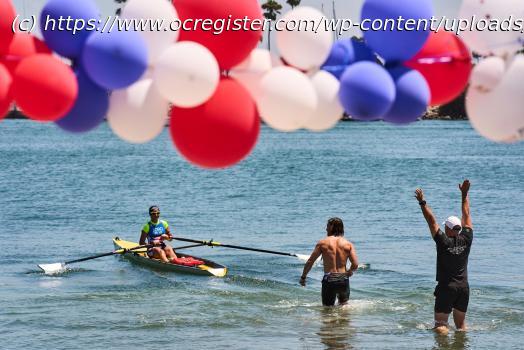Beach sprints is more popular since the IOC announced its inclusion for the 2028 games.
It’s a beach run, a coastal row and a music party rolled into one, and it’s about to become an Olympic event.
On a sunny Southern California morning, nearly two dozen athletes gathered to try their hand at beach sprints at a camp run by USRowing in Long Beach, not far from where the inaugural Olympic races will be held in 2028.
Many were long-time flatwater rowers who wanted to take a shot at something new. Others were already hooked on the quick-paced and unpredictable race format and have been training with an eye on LA28. Two at a time, athletes run to the waterline, hop in a boat, row a slalom course, then turn around and return to shore to jump out and dash across the sand to hit a finish-line buzzer — all in about three minutes.
“You don’t just have to be a good rower — you also have to be a good athlete, and what that means is you’ve got to be able to be dynamic and adapt to whatever Mother Nature throws at you,” said Maurice Scott, a long-time rower from Philadelphia who moved to Long Beach to prepare for the Olympics.
The next summer Olympics will be held in Los Angeles and nearby cities. Interest in beach sprints has risen since the International Olympic Committee announced its inclusion, especially since the games will no longer feature a lightweight rowing category popular among smaller athletes.Athletes train at a beach sprints camp organized by USRowing in Long Beach, Calif., Sunday, Aug. 10, 2025. (AP Photo/Damian Dovarganes)
Rowing officials developed the beach sprint format a little over a decade ago hoping to engage spectators in a sport that’s otherwise removed from people watching from the shore.






